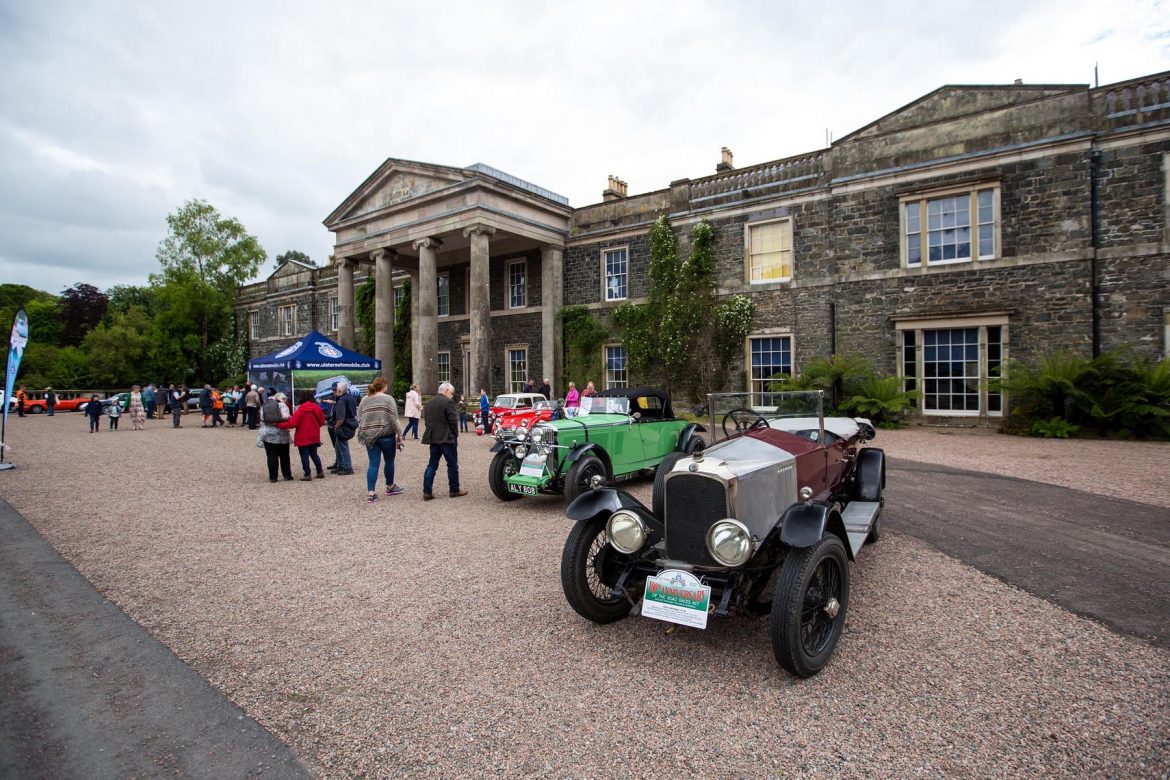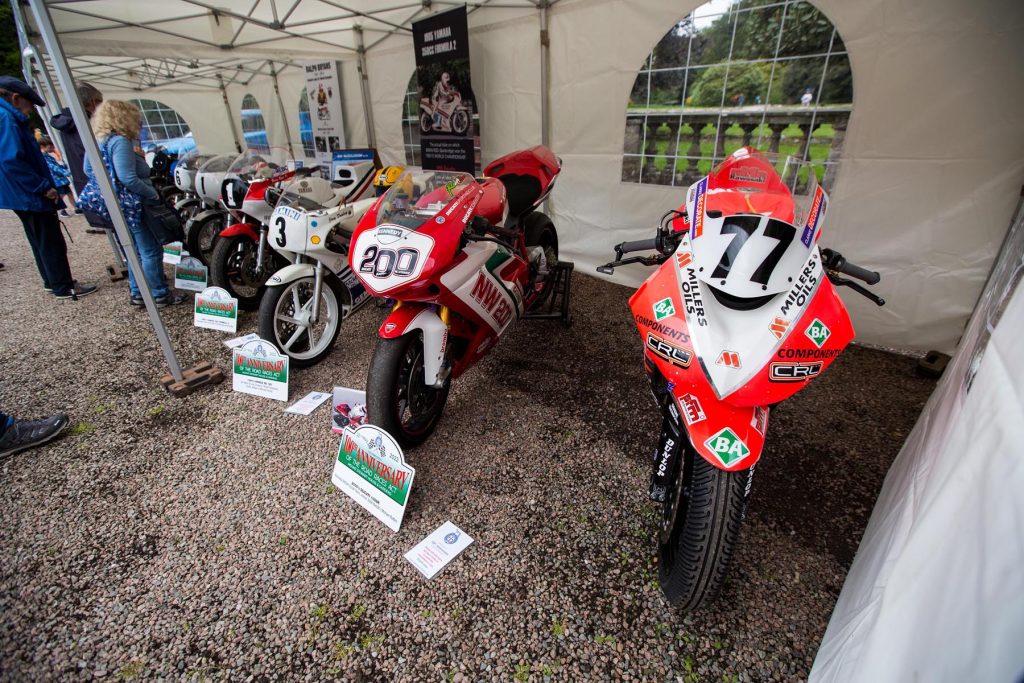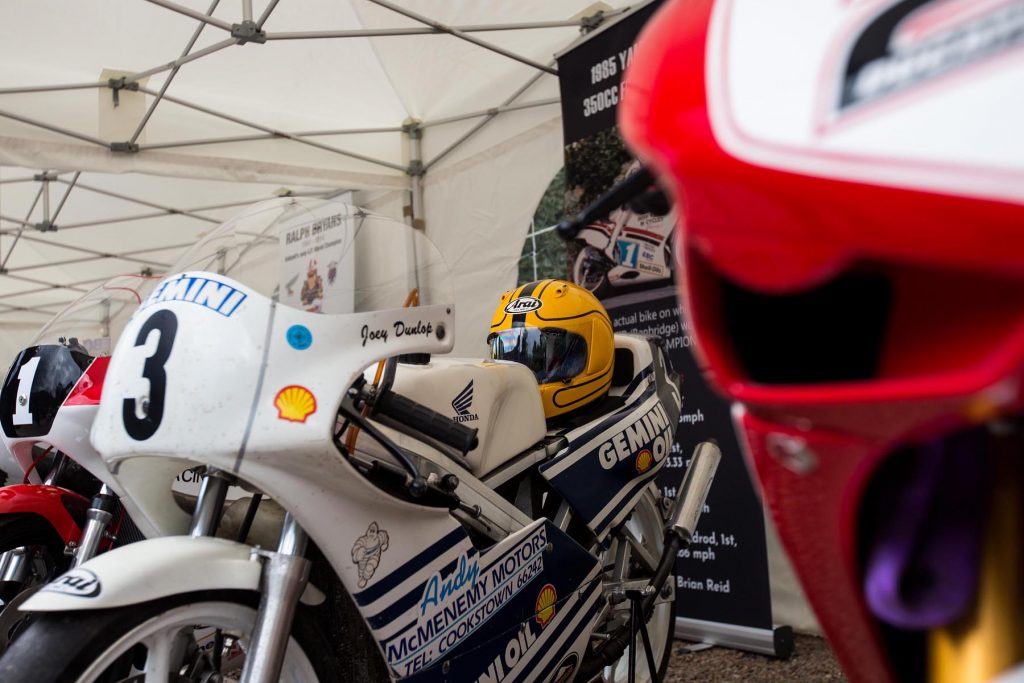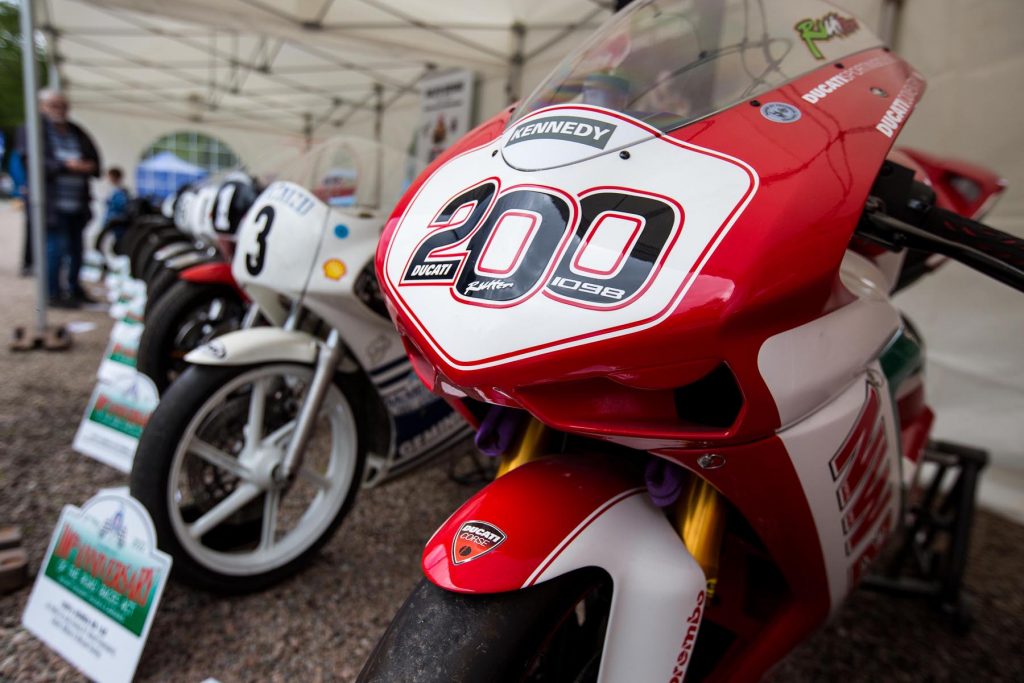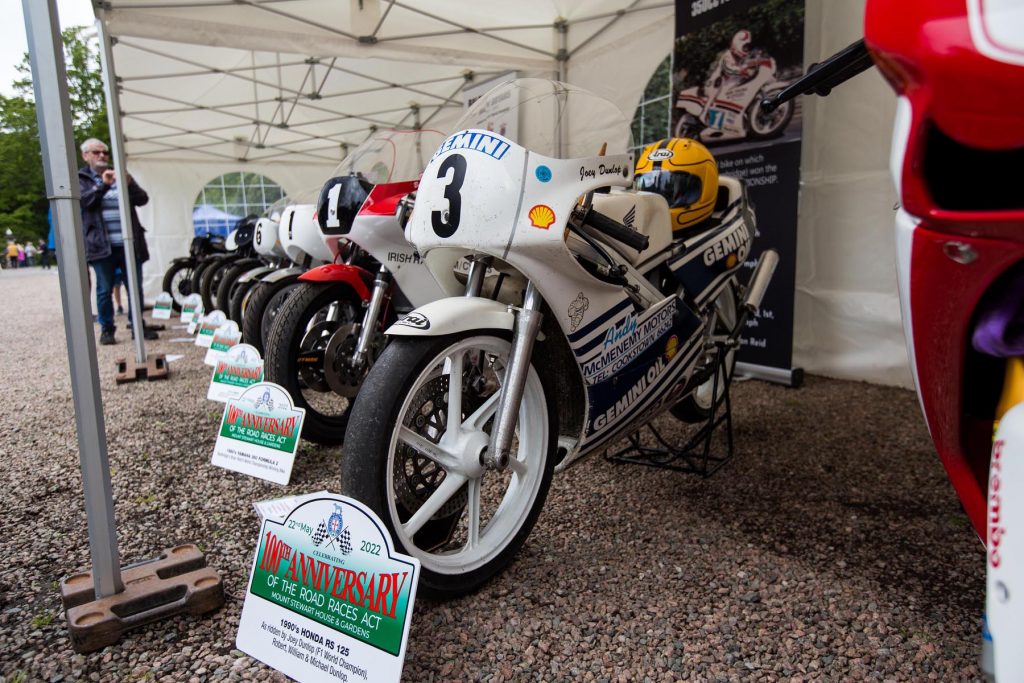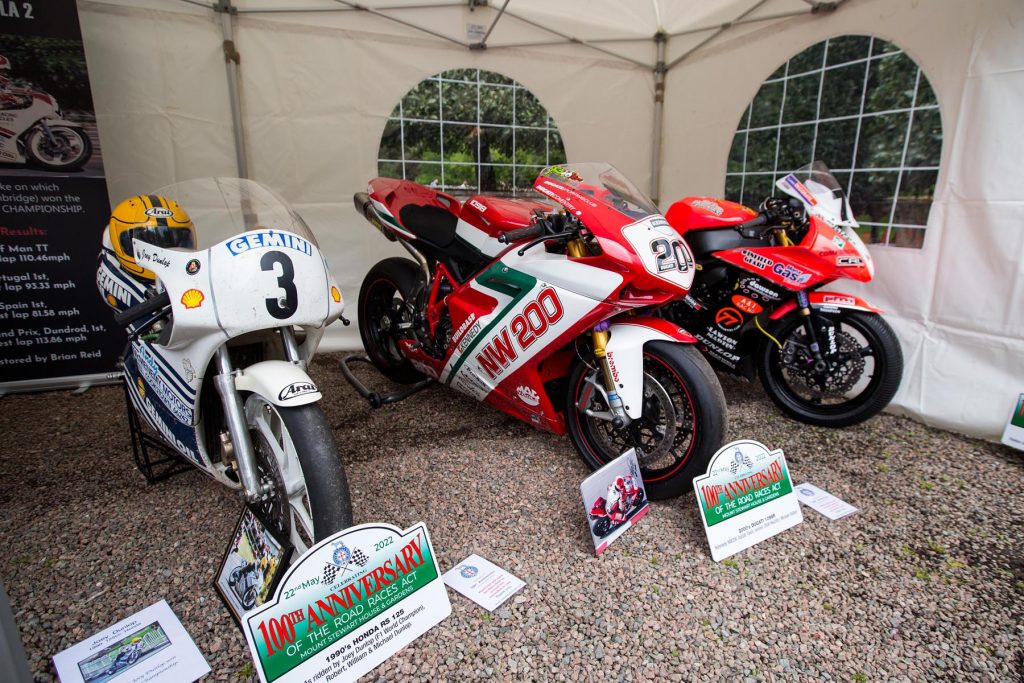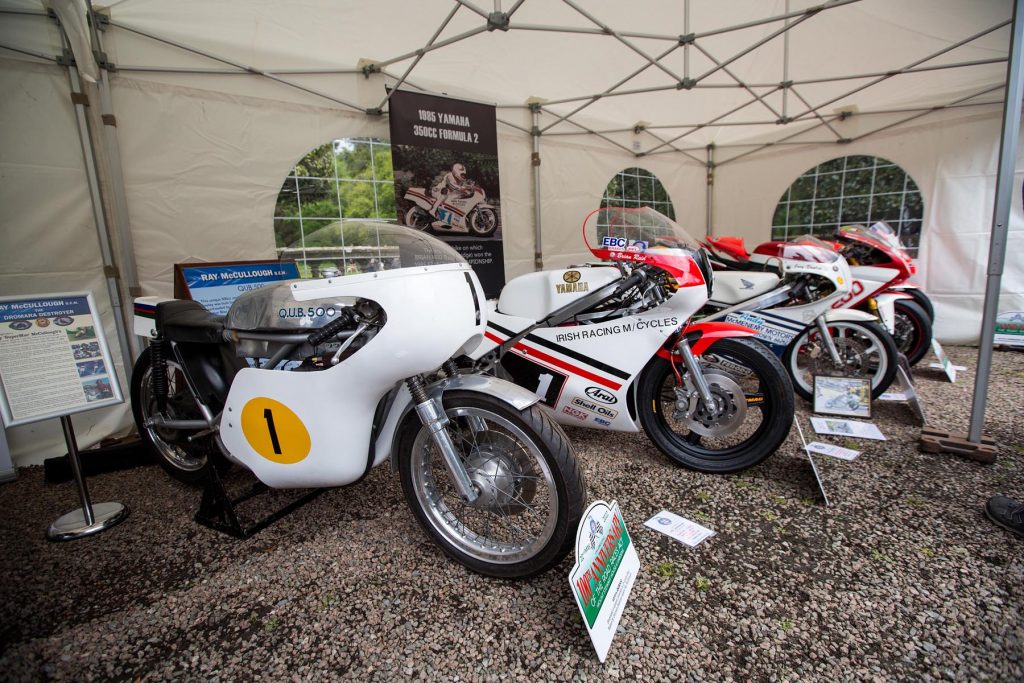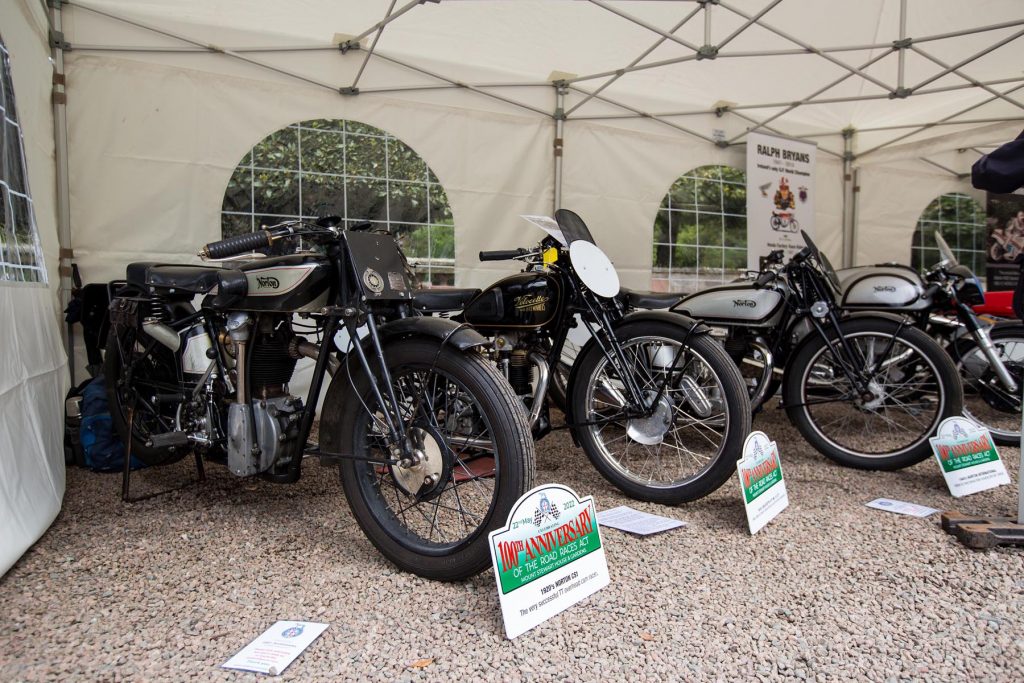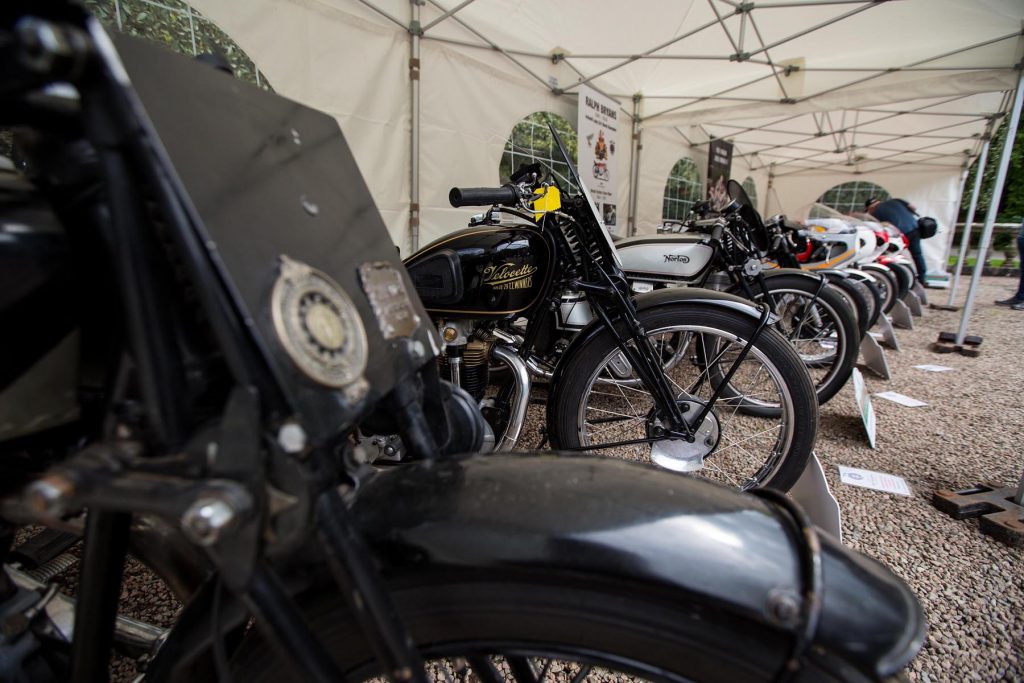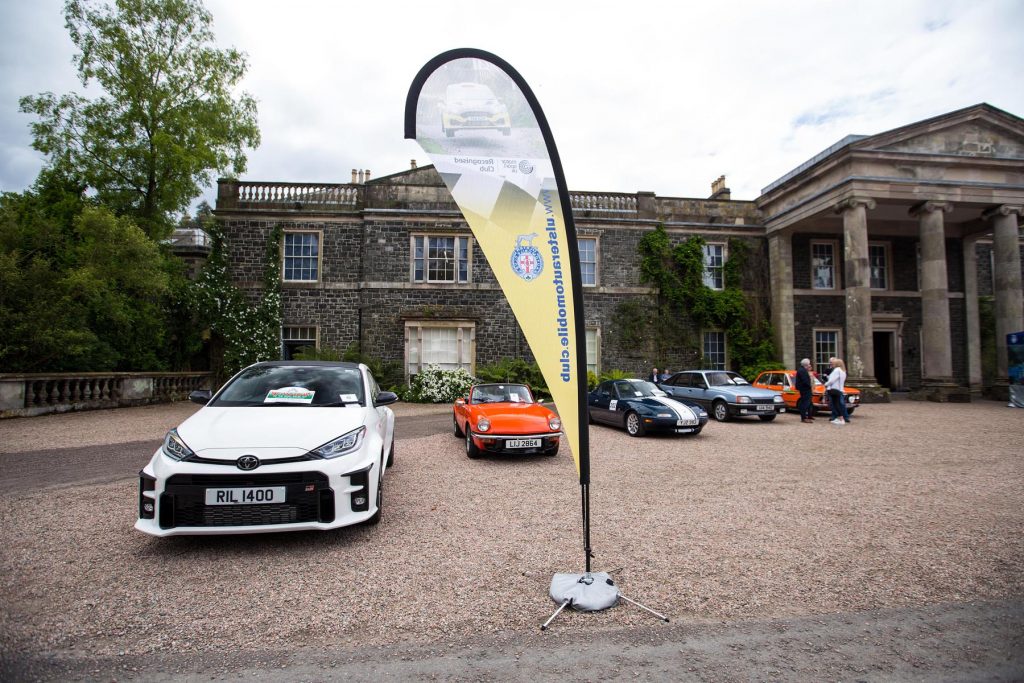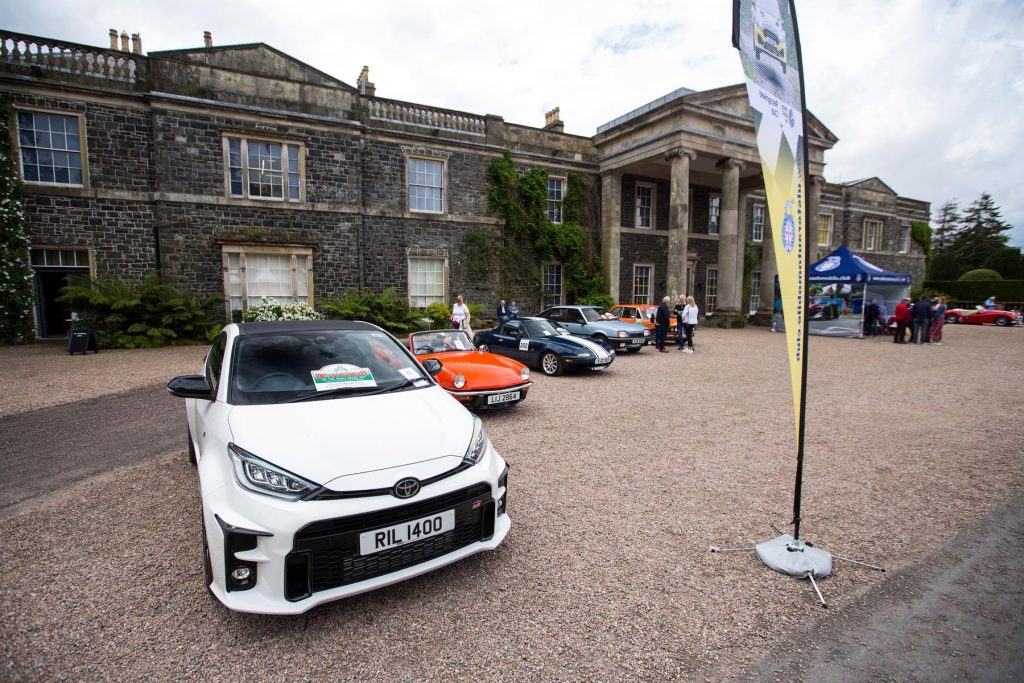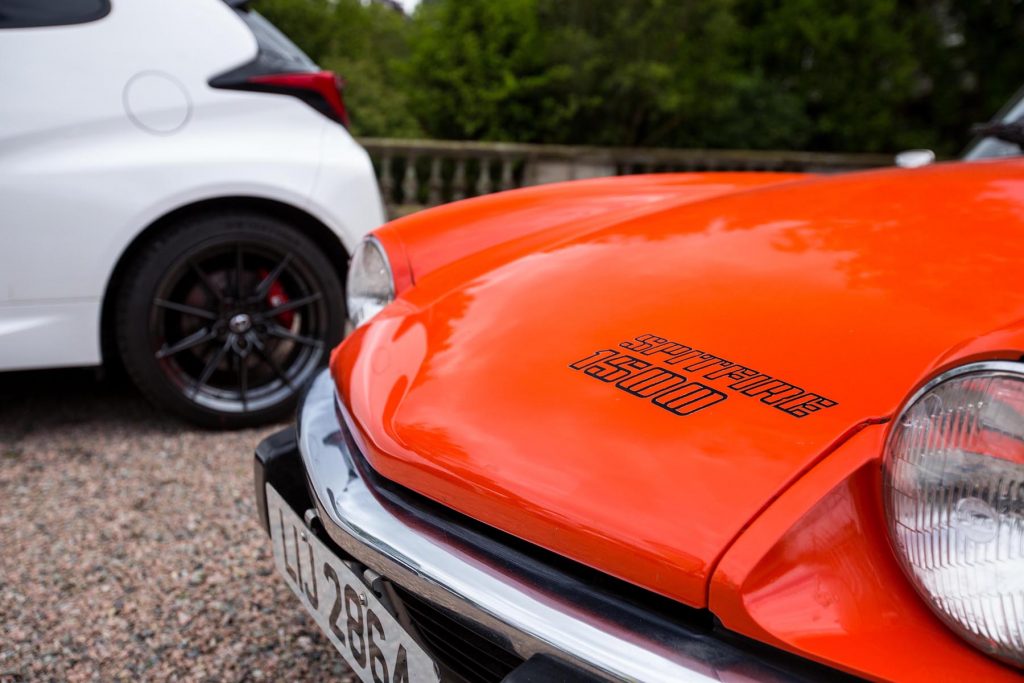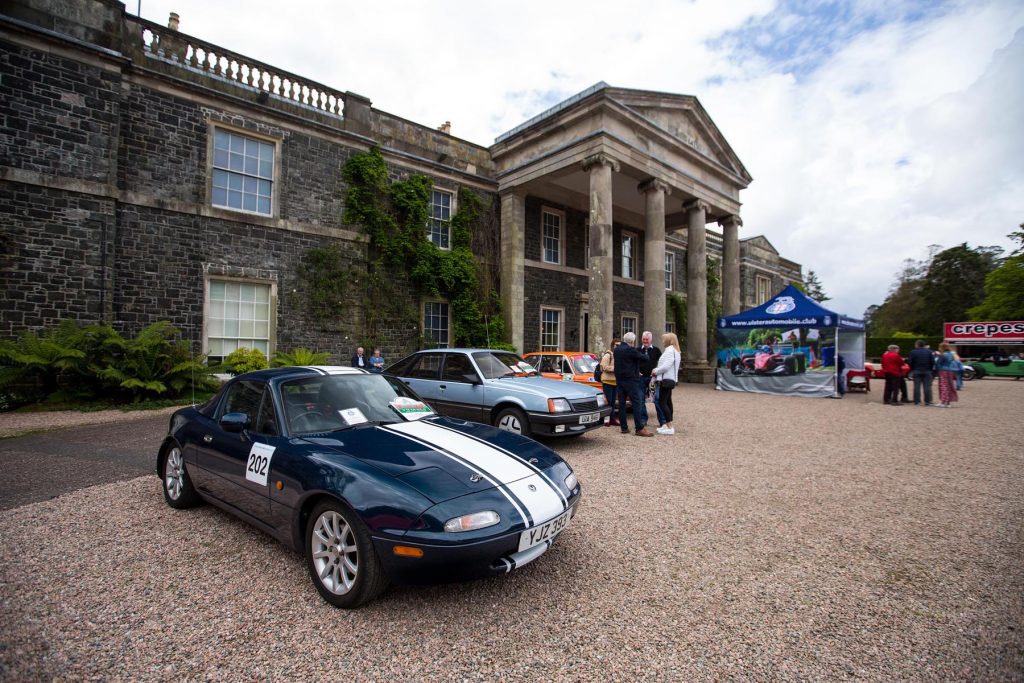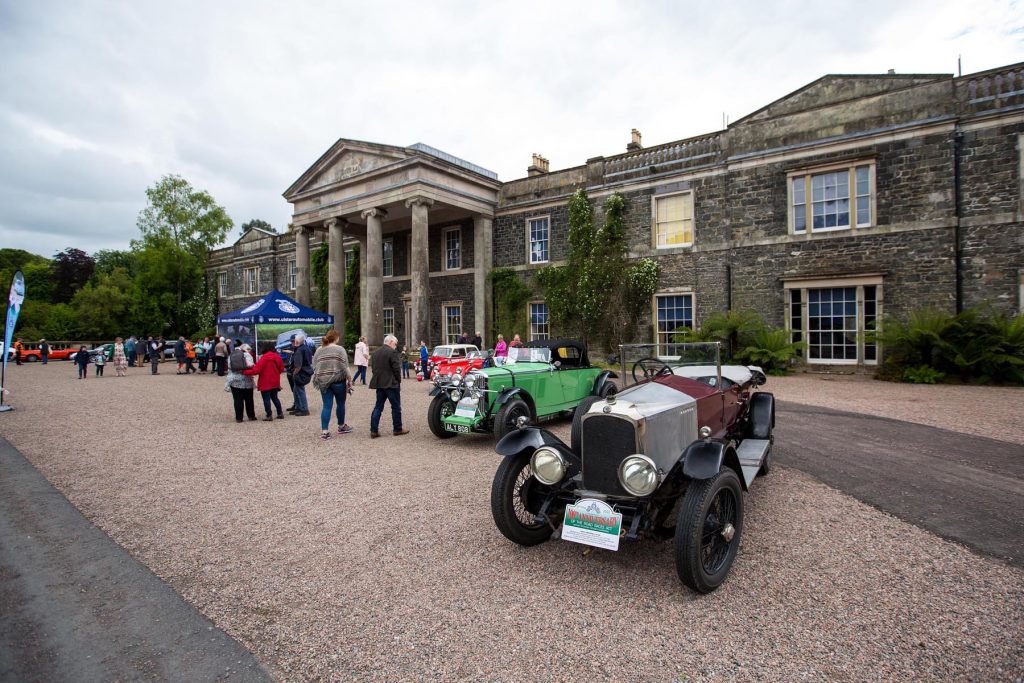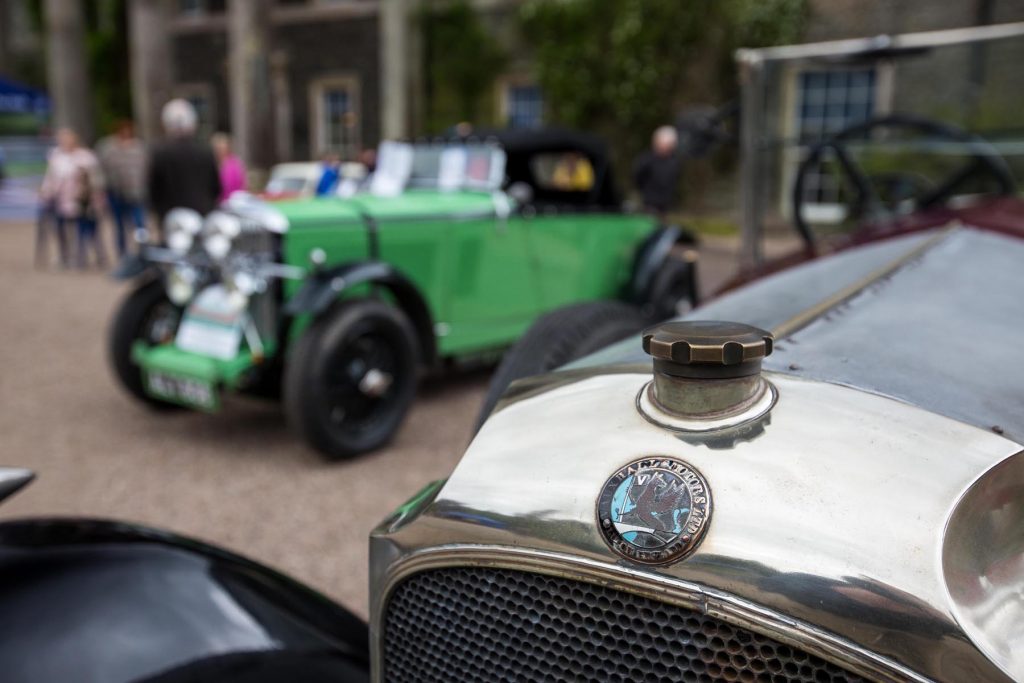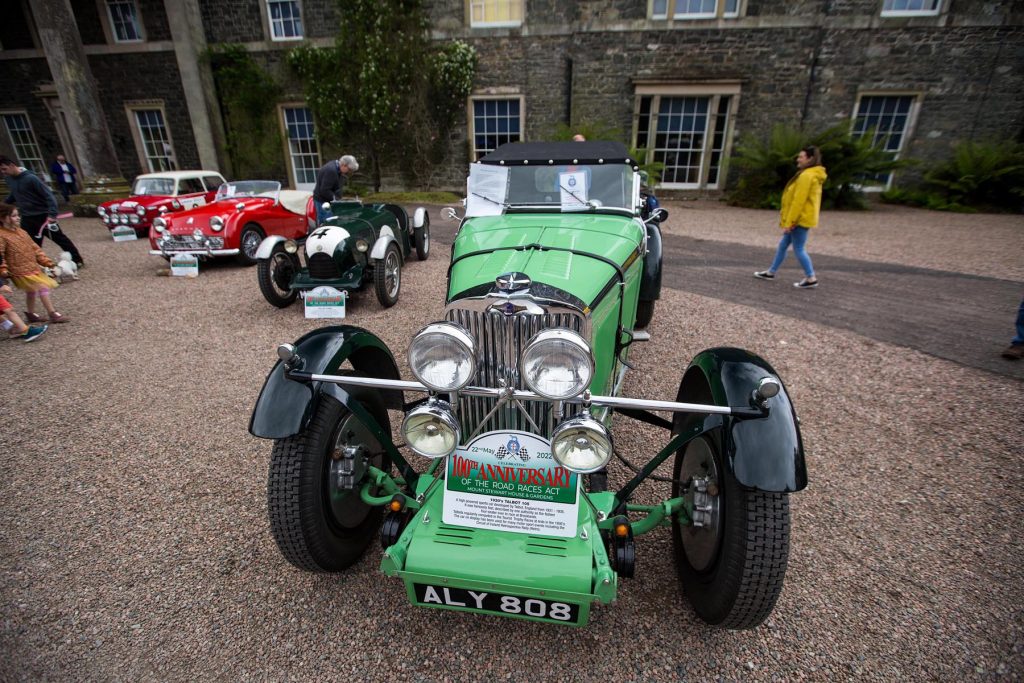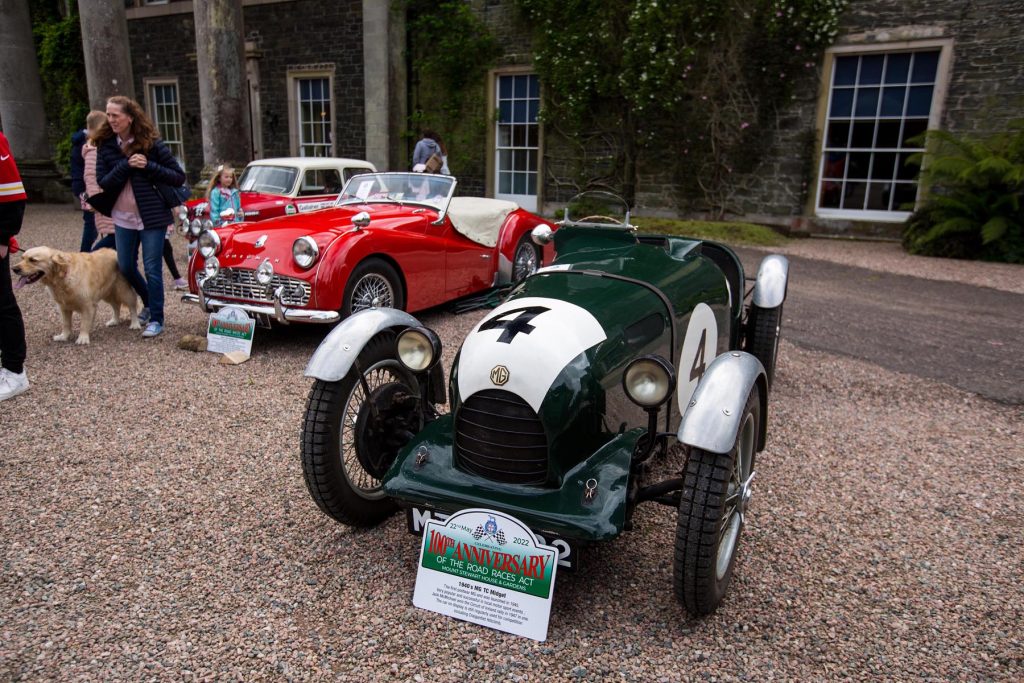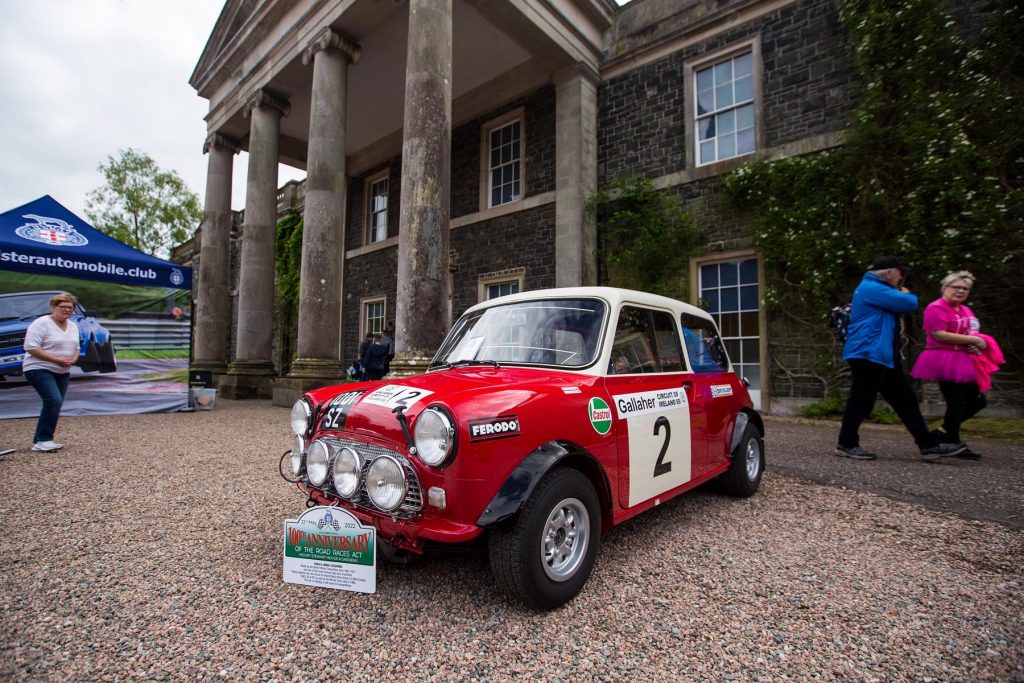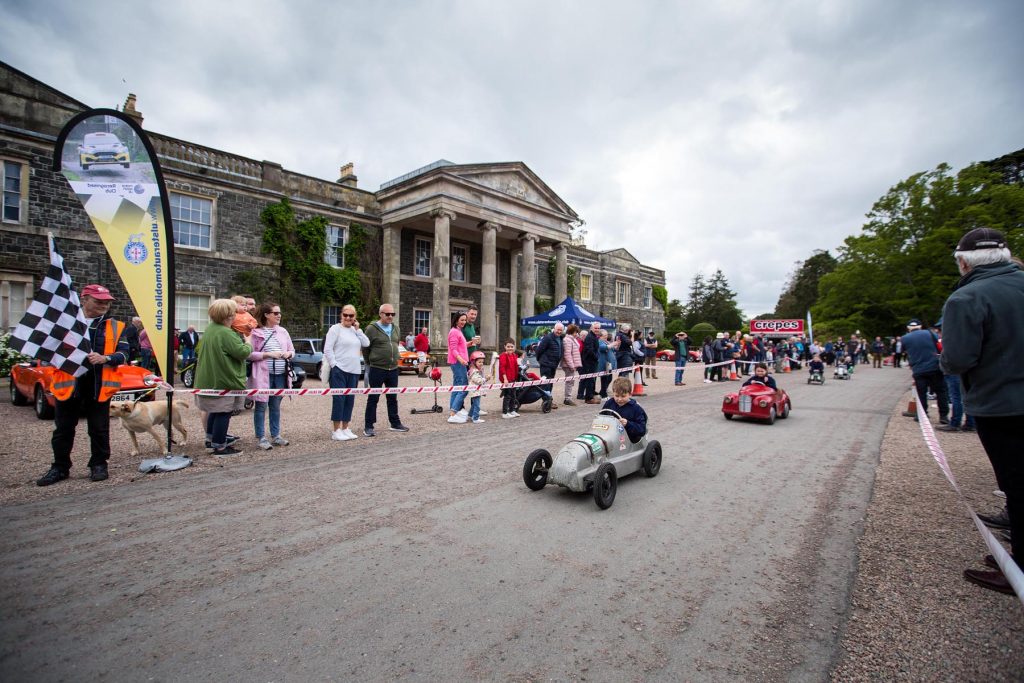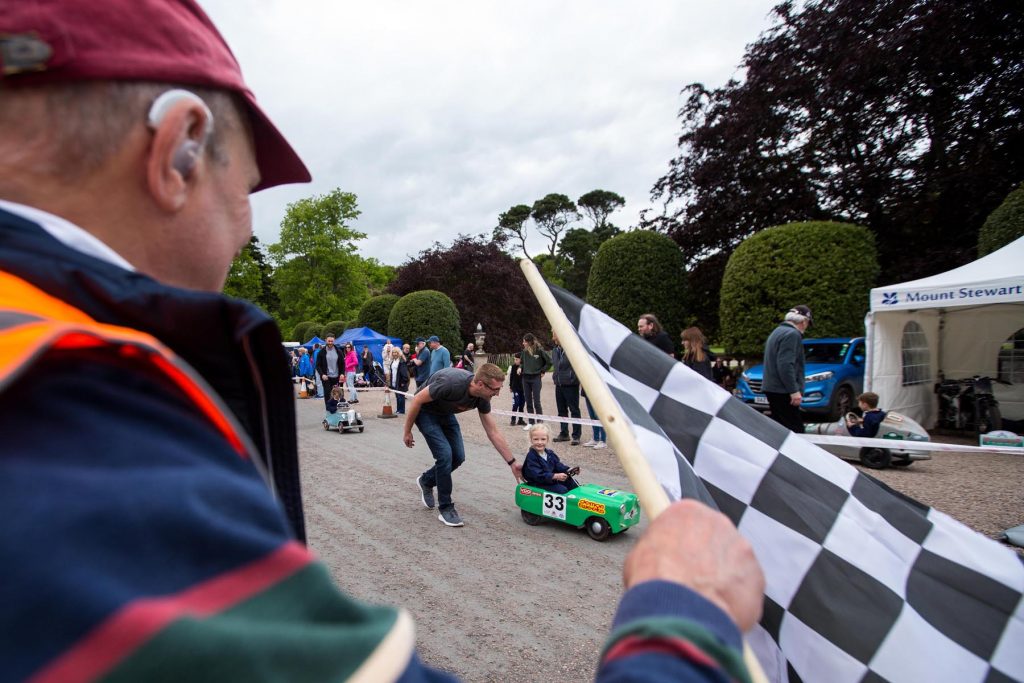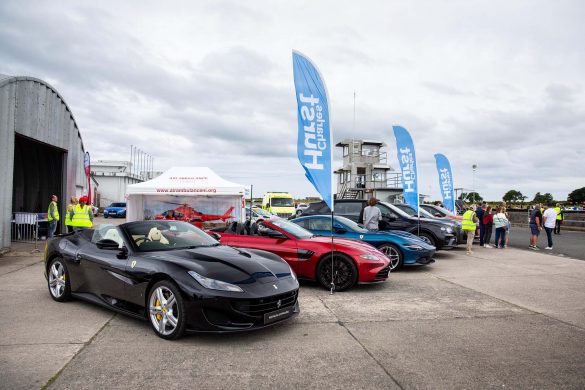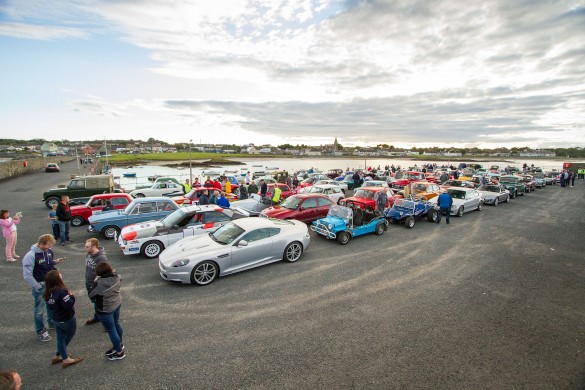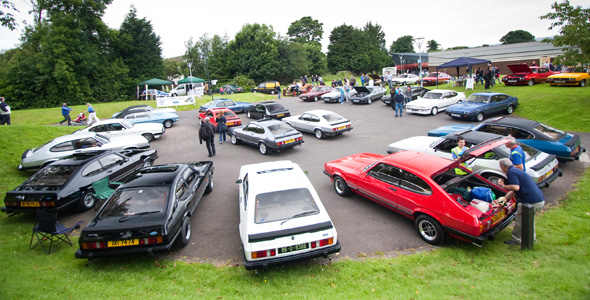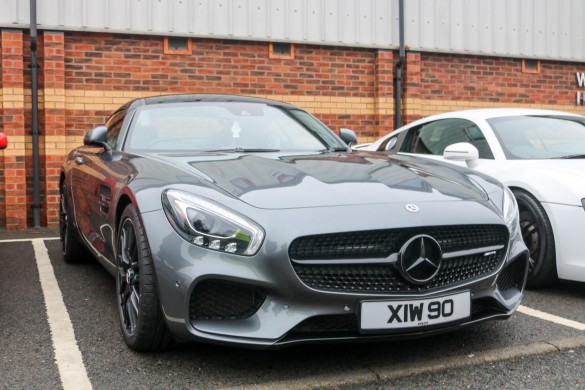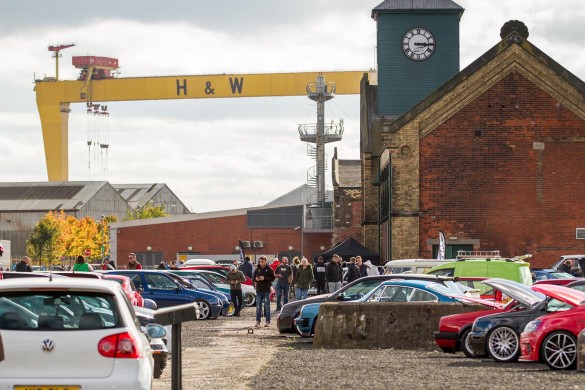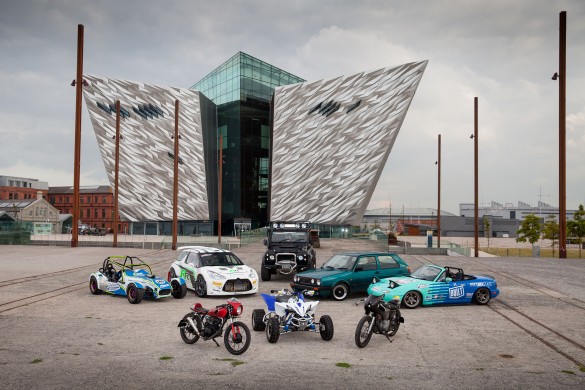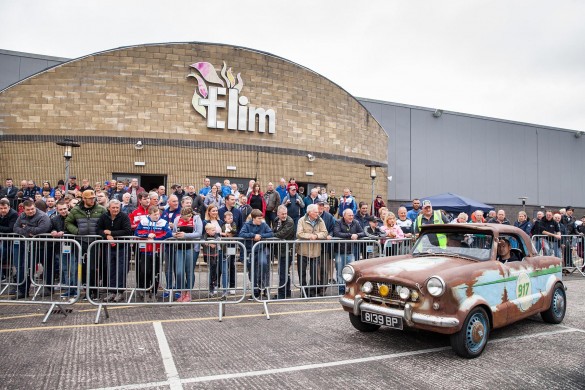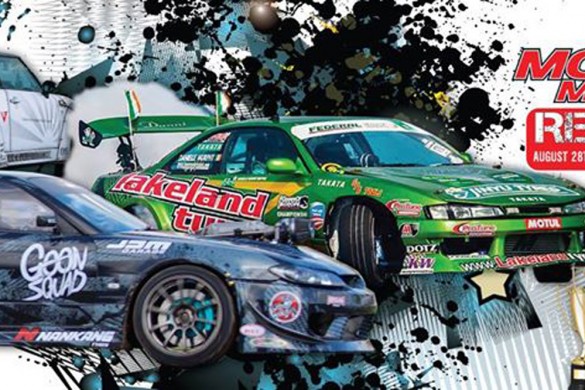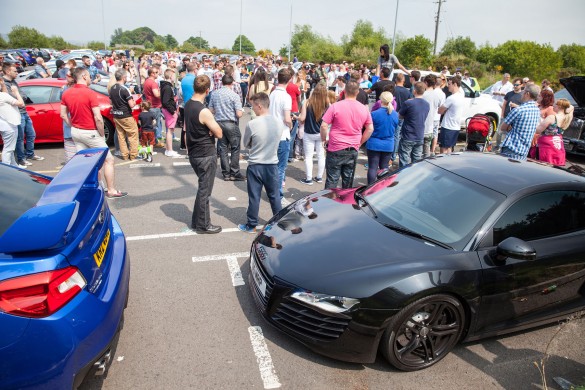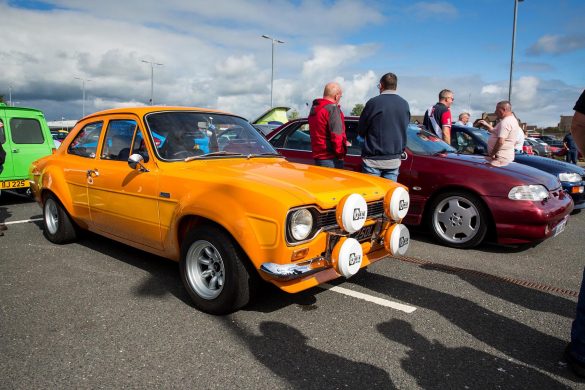On Sunday 22nd May, in Mount Stewart House & Gardens the Ulster Automobile Club displayed 10 Cars and 10 Motor Bikes representing each of the decades to celebrate this historic anniversary.
This is a significant milestone in the history of Road Races because this Act facilitated the closing of public roads for the purposes of racing. Currently some of the most famous uses of this legislation include the North West 200, Tandragee 100 and Armoy Road Races for motorcycles. Special thanks to Will Corry Senior who arranged all the motorbikes and to Ray McCullough the Dromara destroyer for his appearance on the day.
On the four wheeled front, the Circuit of Ireland International Rally, Craigantlet Hill Climb and Knockagh Hill Climb, all organised and promoted by the Ulster Automobile Club (UAC) run safely and successfully on closed public roads. It was therefore important that the UAC had a hand in organising this event in conjunction with the National Trust. Sincere thanks to Paul Robinson who arranged the cars and other members of the UAC who helped with the organisation.
Mount Stewart, the ancestral home of the Marquis of Londonderry who was instrumental in steering the Act passed by the newly formed Northern Ireland Parliament in 1922, provided an ideal backdrop for the occasion.
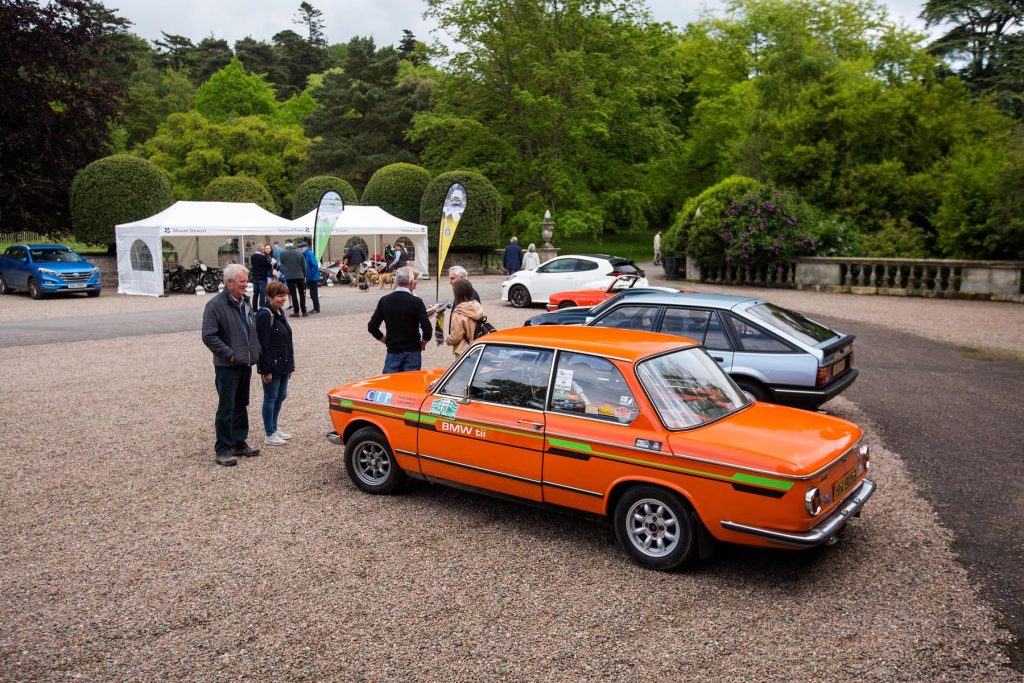
The good weather saw visitors to the House and Gardens admiring the displays of bikes and cars and enjoying a walk in the world famous scenically beautiful grounds.
One of the highlights of the day was a pedal car race in front of the House in the afternoon. A number of practices were held for each of the two classes of vehicles. Three racers competed in each heat and the final, a very exhausting experience for many of the very young drivers who were between 5 and 8 years old! Everyone who took part was a winner. The competition between the racers was fierce and it appeared even more so between their parents!!
We were delighted that Lady Rose Lauritzen, granddaughter of the 7th Marquess and Marchioness of Londonderry, presented awards to each of the ‘Future Racing Champions’!
Initial feedback including comments like: ‘a great event, thoroughly enjoyed the day, especially the pedal car race, thank you very much.’
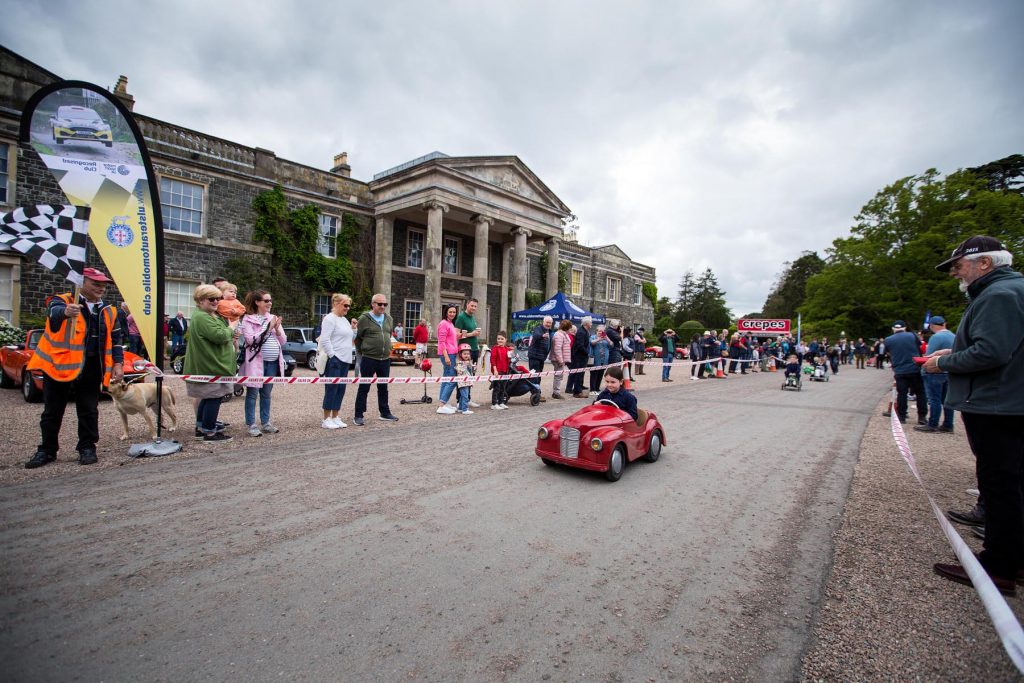
The UAC would like to take this opportunity to thank Lady Rose and the National Trust for their help and support, parents who allowed their children to compete, their friends and families and all the other folks without whom this fantastic experience would not have been remembered.
Paul Robinson, a director of the UAC commented, “We are here today celebrating 100 years since the motor vehicle races act was passed. That’s the legislation which made Northern Ireland the only part of the United Kingdom where you could close a public road, to race.
“Up until then, all Grand Prix racing in Europe was done on public roads. But in Great Britain and Ireland, racing on public roads was illegal. So, if you wanted to race, you had to go to Europe.
“When Northern Ireland was formed in 1921 it gave local motorsport enthusiasts the opportunity to get their own parliament to pass the legislation to close roads. There was a committee formed in January 1922 to identify a course, and Harry Ferguson (he of tractor fame) was the chairman of the committee that negotiated with Antrim County Council for what became the first Ulster Grand Prix motorbike course.
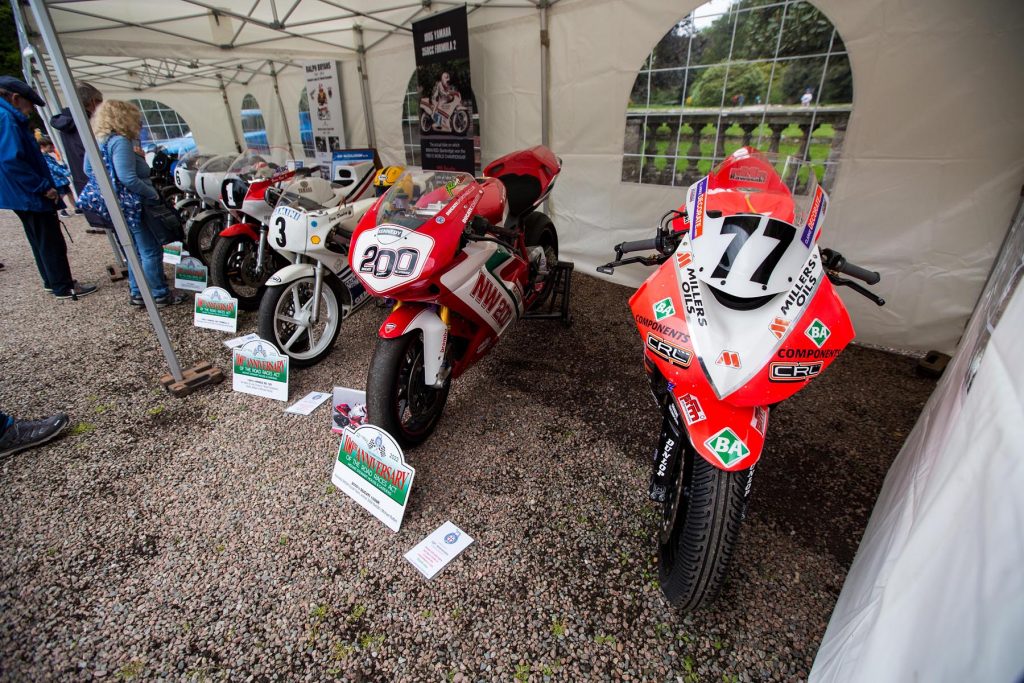
“It was intended to be cars and motorbikes originally,” explained Robinson, “The bike guys got their act together, and in October 1922 they had their first Ulster Grand Prix motor bike race. The cars weren’t as well organised. It took them to 1924 to try and hold an Ulster Grand Prix, at Clady, the same course as the motor bikes.
“The idea was that the same course would be used for both, but a few days before the Grand Prix took place, one of the entrants, a guy called Sydney Piper, of Stanley Motor Works, crashed during practice and was killed, so the race was cancelled.
“They tried to reorganize and reschedule the race, but they couldn’t get a date in the calendar and all sorts of arguments broke out about could you have a race in the north or not, and in the end they decided they would have to form a club specifically for motorsport for cars and so the Ulster Automobile Club was born in 1925.”
Robinson continued, “The reason we’re here today is that was the Marquess of Londonderry who introduced the bill to the Northern Ireland Parliament, he looked after all the debates, and he basically brought it through until it was passed. He introduced it on the 18th of May and it got the King’s ascent on the 10th of June.”
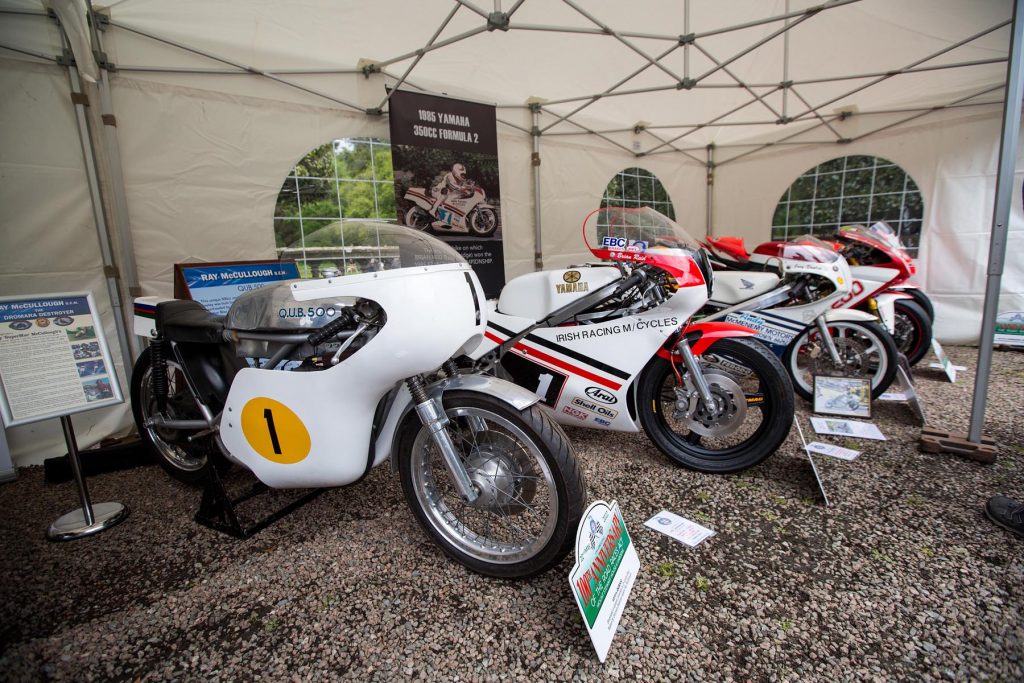
Alongside the bikes and cars on display, the pedal car race added great nostalgia to this event as Robinson explains, “The Ulster Automobile Club first introduced pedal car races in 1931, at a ball that they were holding to raise funds for the RAC tourist trophy races in Newtownards. It was in The Plaza Ballroom, Chichester Street, Belfast and as part of the entertainment they had what they called the juvenile TT.
“They had to do five laps of the ballroom and, believe it or not, they timed it. Now I don’t know how they managed to get an accurate time under those circumstances, but they did something. They held this every year right up until 1936, when the last of the ARDS tourist trophy races was held.”
Words: BILL SWANN/UAC Photos: GRAHAM BAALHAM-CURRY
